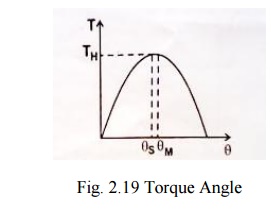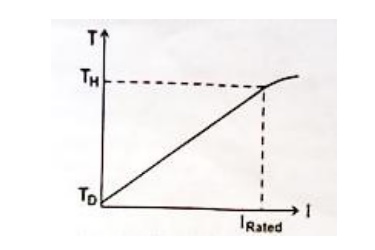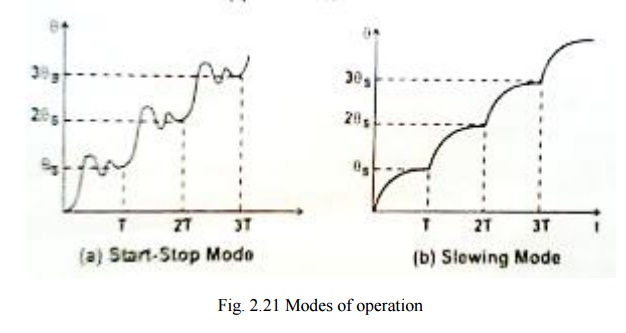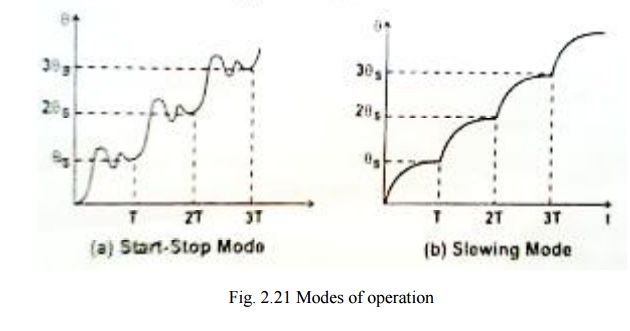Stepper motor characteristics are divided into two groups
v Static characteristics
v Dynamic characteristics
1. Static characteristics
It is divided into two charteristics.
(i)Torque Angle curve
(ii)Torque current curve
(i)Torque-Angle curve
Torque angle curve of a step motor is shown in fig.2.32. it is seen that the Torque increases almost sinusoid ally, with angle Θ from equilibrium.

Holding Torque (TH)
It is the maximum load torque which the energized stepper motor can withstand without slipping from equilibrium position. If the holding torque is exceeded, the motor suddenly slips from the present equilibrium position and goes to the static equilibrium position.
Detent torque (TD):
It is the maximum load torque which the un-energized stepper motor can withstand slipping. Detent torque is due to magnetism, and is therefore available only in permanent magnet and hybrid stepper motor. It is about 5-10 % of holding torque.
Torque current curve
A typical torque curve for a stepper motor is shown in fig.2.34. It is seen the curve is initially linear but later on its slope progressively decreases as the magnetic circuit of the motor saturates.

Torque constant (Kt)
Torque constant of the stepper is defined as the initial slope of the torque-current (T-I) curve of the stepper motor. It is also known as torque sensitivity. Its units N-mA, kg-cm/A or OZ-in/A
2. Dynamic characteristics
A stepper motor is said to be operated in synchronism when there exist strictly one to one correspondence between number of pulses applied and the number of steps through which the motor has actually moved. There are two modes of operation.
Start-Stop mode
Also called as pull in curve or single stepping mode.
Slewing mode
In start –stop mode the stepper motor always operate in synchronism and the motor can be started and stopped without using synchronism. In slewing mode the motor will be in synchronism, but it cannot be started or stopped without losing synchronism. To operate the motor in slewing mode first the motor is to be started in start stop mode and then to slewing mode. Similarly to stop the motor operating in slewing mode, first the motor is to be brought to the start stop mode and then stop.
Start Stop mode
Start stop mode of operation of stepper motor is shown in fig.2.35 (a).In this second pulse is given to the stepper motor only after the rotor attained a steady or rest position due to first pulse. The region of start-stop mode of operation depends on the operation depends on the torque developed and the stepping rate or stepping frequency of stepper motor.

pulse is given to the stepper motor only after the rotor attained a steady or rest position due to first pulse. The region of start-stop mode of operation depends on the operation depends on the torque developed and the stepping rate or stepping frequency of stepper motor.


